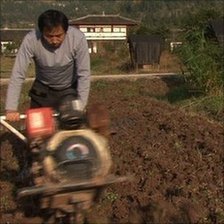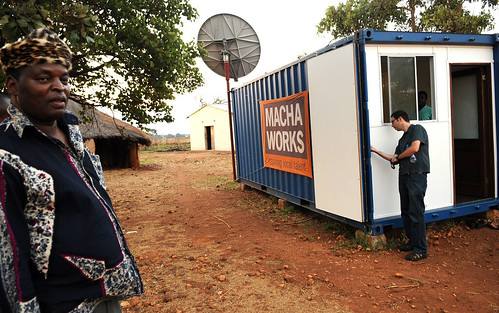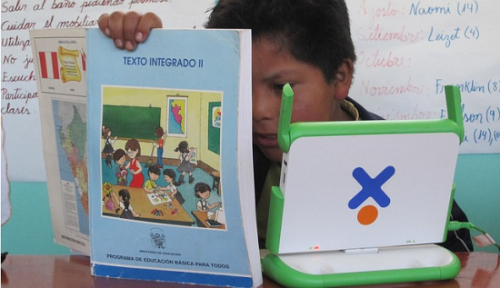
This is a research paper compiled by the Center for Global Development, an independent, nonprofit policy research organization dedicated to reducing global poverty and inequality and to making globalization work for the poor. The paper evaluates and draws conclusions about a mobile education program, called Project ABC in Niger.
The pilot phase of Project ABC began with the Catholic Relief Service (CRS), in partnership with UC Davis, Tufts, and Oxford University and shows how SMS can turn mobile phones into a platform for adult literacy and market information for agricultural communities.
Projet d’Alphabetisation a Base Cellulaire, or Project ABC, works with non-formal education centers established by the CRS Niger Food Security and Nutrition Program (2007-2011), is funded by USAID/Food for Peace, and is implemented with Care and Helen Keller International. The project uses multimedia phones that have been programmed with a digital curriculum in the local languages of Hausa and Zarma, and incorporates a practical literacy component tied to obtaining market information via text message.
In the first year of ABC, participants learn basic cell phone technology, including SMS. In the second year, interactive multimedia phones and a digital curriculum that includes phonetic activities and varied texts are used to further develop literacy skills. Participants also use skills in literacy, numeracy, and basic cell phone technology in a companion program that teaches them how to request and retrieve market information via SMS.
The final research paper indicates that mobile phones have had an impact on participants’ literacy skills, and the model could be sustainable in the long run:
Overall, students demonstrated substantial improvements in literacy and numeracy test scores, suggesting that the adult education curriculum is effective in increasing learning. Students in mobile phone villages showed substantial additional gains in literacy and numeracy exam scores.
There is also evidence of persistent impacts: eight months after the end of the first year of classes, students in ABC villages retained what they had learned better than the non-ABC students. These effects do not appear to be driven by differences in the class time devoted to students, teacher experience or teacher and student attendance. Rather they can be partly explained by the effectiveness of mobile phones as an educational tool: Students in ABC villages used mobile phones more frequently to make calls, write SMS and search for price information as compared to their nonmobile phone counterparts. The program suggests that simple and relatively cheaper information and communication technology can serve as an effective and sustainable educational tool for rural populations.
According to Isbrandt, the program is operational in 56 literacy centers in the rural regions of Dosso and Zinder, in primarily agricultural villages. As is the case in most rural settings in West Africa, local language reading materials are otherwise scarce. Participants in the program include 1,400 learners, half of whom are women
For the full research paper and the evaluations in the PDF format, please visit this link.
References
Aker, Jenny C., Christopher Knoll and Travis J. Lybert, “ABC, 123: The Impact of a Mobile Phone Literacy Program on Educational Outcomes,” Center for Global Development Working Paper, September 2010
Isbrandt, Scott (2009) Cell Phone in West Africa: Improving Literacy and Agricultural Market Systems. Retrieved September 1, 2010.
















































